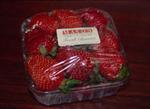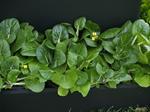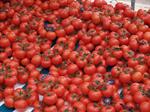Learn more about Managing Hydroponic Systems Distance Learning
 This course has been developed to complement Hydroponics I and II; and is intended for people who already have some experience and understanding of hydroponics.
This course has been developed to complement Hydroponics I and II; and is intended for people who already have some experience and understanding of hydroponics.
Course Content and Structure
There are eight lessons in this course as follows: 1. Options for Managing Plant Culture - different approaches to cultural operations in hydroponics. Organics vs. hydroponics:Nutrient differences in food products. Is hydroponic food more or less healthy than organic? How feasible is organic hydroponics?
2. Planning a Hydroponic Operation - site and crop selection; matching a system with a crop, materials, resources & services required.
 3. System Design Components - pumps, hardware, media, pipes, size, type, and so forth. Components for different types of culture.
3. System Design Components - pumps, hardware, media, pipes, size, type, and so forth. Components for different types of culture.
4. Managing a Hydroponic System in Hot, Humid Conditions - tropical and subtropical climates or summer in temperate areas.
5. Water Management - water quality measures, treatments, runoff,testing, purifying water, water in recirculating and run-to-waste systems.
6. Nutrient Formulation - standard formulations, detecting toxicities & deficiencies.
7. Controlling Nutrient Levels - using EC and pH measures of concentration levels, solution temperatures, and maintaining nutrient levels.
8. Pest & Disease Control - nutrient and pH manipulation for control of pests & diseases, integrated pest management, common pests and diseases.
Aims
- Describe different approaches to cultural operations
- Demonstrate an awareness of similarities and differences between organic and hydroponic production techniques
- Describe how to plan a hydroponic operation through site and crop selection, matching a specific crop, materials, resources and services required, and site layout; for different specific crops.
- Discuss system design components such as pumps, grow beds, solution tanks, media and pipes in terms of size, type, and options for different cultures and specific crops.
- Provide details of how to manage a hydroponic system in hot, humid conditions such as in tropical or subtropical areas, or in summer, in temperate areas, for specific crops.
 Explain options for water management such as water sources, quality, testing, treatments, and use in recirculating and non recirculating systems.
Explain options for water management such as water sources, quality, testing, treatments, and use in recirculating and non recirculating systems.- Recommend awareness of natural and other methods of pest and disease control such as biological controls, as part of IPM and nutrient and pH manipulation for different pests and diseases.
- Explain and recommend different standards of nutrient formulation, and advanced methods of detecting toxicities and deficiencies in specific crops.
- Recommend methods to control nutrient level concentrations by taking EC, pH and temperature measurements, and maintaining nutrient levels for different specific crops.
What You Will Do
- Learn about the following:
- Hydroponics versus Organic Crops
- Feasibility of Organic Hydroponics
- Hydroponic Food Health
- Types of Hydroponic Culture -Water, Sand, Aggregate, Rockwool, Sawdust, Other
- Planning a Hydroponic System
- Site Appraisal
- Climate -temperature, frost, snow, humidity, light, dust, wind
- Water Supply
- Other Resources
- Site Preparation
- Site Layout
- Matching a System with a Crop
- Grow Bed and Tank Construction
- Pumps and Pipes
- Materials for Different Types of Culture based Systems
- Materials for use with Sand Culture
- Materials for Use with Aggregate Culture
- Materials for Use with Rockwool Culture
- Materials for Use with Sawdust Culture
- Materials for Use with NFT
- Aeroponics
- Water
- Chilling
- Humidity and Temperature
- Pest Control
- Types of Tropical Culture
- Sand Culture in Hot Humid Places
- Ebb and Flow Systems
- Modified Dynamic Root Floating (DRF) System
- Deep Flow and Chilling
- Water Sources -mains water, rain, underground, surface
- Water Quality
- Hard Water
- Water pH
- Water EC
- Sodium Chloride
- Turbidity
- Smell and Colour
- Iron Content
- Carbon Dioxide
- Water Recirculating Systems
- Water Treatments
- Compounds for Formulations
- Dutch Classification of Nutrient Formulae
- Nutrient Formulae
- Nutrient Deficiencies and Toxicities
- Nutrient Mobility
- Detecting Nutrient Deficiencies
- Toxicities
- Nutrients and pH
- EC and Nutrient Solution Levels
- Maintaining Nutrient Levels
- Nutrient Temperatures
- Integrated Pest Management
- Common Pests and Diseases
____________________________________________________________________________________________
 TYPES OF HYDROPONIC SYSTEMS
TYPES OF HYDROPONIC SYSTEMS
(An extract from our course notes)
Having discussed the similarities and differences between organic soil culture, organic hydroponics and soil-less hydroponic culture we can now turn our attention to the different types of traditional soil-less systems available to hydroponic growers.
Under commercial hydroponic production there are two main types of hydroponic systems: the first is solution culture, dominated by NFT (nutrient film technique) but also including pond or raft systems, deep flow systems and aeroponics, and secondly drip or subsurface irrigation systems incorporating a soilless medium (aggregate culture) of which there is a wide selection in use worldwide. There are a large number of other systems which have been designed, developed, modified and used by hobby and commercial growers alike over a period of many decades, however these are of minimal importance and most are not in use commercially.
SOLUTION CULTURE
Solution culture is more commonly used for smaller plants such as lettuce, micro greens, salad greens, herbs and leafy vegetables although it can be used for wide range of crops. This method does not use beds or slabs of growing medium, as the plants are supported with their roots bathed in nutrient solution from where they extract nutrients and oxygen. The main types of solution culture for both hobby and commercial systems are NFT, DFT, pond or raft systems and to a lesser degree aeroponics.
NUTRIENT FILM TECHNIQUE (NFT) AND DEEP FLOW TECHNIQUE (DFT)
NFT (nutrient film technique) and DFT (Deep flow technique) are two systems of production which use a flow of nutrient solution inside growing channels which contain the plants roots. NFT and DFT are used in many commercial hydroponic systems as well as by amateur growers who prefer the convenience of a hydroponic system with no media or aggregate.
NFT systems rely on a thin (2-3mm deep) flow of nutrient along the base of a pre formed nutrient channel. Channels are often constructed of rigid PVC, especially designed and manufactured for hydroponic crop production, or formed from thick plastic film which is folded up form a triangular shaped channel. In these channels the plants are placed as either bare rooted transplants or in small pots or plugs of soil-less media. The plants rapidly develop a dense root mat along the base of the channel and obtain all their nutrients from the constantly recirculating nutrient system. NFT systems require a pump to circulate the nutrient through the channels at the correct flow rate (at least one litre per minute per channel), a large nutrient reservoir which contains the nutrient solution being pumping around the system and return channels which direct the flow of nutrient from the growing gullies back to the nutrient reservoir.
DFT (Deep flow technique) can use a similar system or channels to DFT or be constructed with larger beds or troughs containing a deep flow of nutrient solution rather than a film. DFT systems rely on the introduction of oxygen along the entire length of growing channel or bed so that oxygenation rates in the root zone are continually kept high enough for root growth. As with NFT the nutrient solution is kept continually flowing and recycling with CF (EC), pH and often temperature adjusted back at the main nutrient reservoir.
POND, RAFT, FLOAT OR RACEWAY SYSTEMS
These systems incorporate the use of lightweight polystyrene panels which float on the surface of large ponds or raceways of nutrient solution. The panels support the plants while the roots are submerged in the nutrient solution below, often an air gap between the base of the plant and the nutrient is maintained for additional aeration. These types of pond systems are in widespread use commercially in many countries with entire greenhouse production ponds over a hectare each in size used to grow crops such as lettuce, herbs and other salad greens. Pond systems are well suited to small self supporting crops and the floating panels can be used as a transportation system for the plants as they are pushed along on the surface of the nutrient solution.
The nutrient solution contained in the pond system typically required aeration in the form of compressors, air bubblers and other methods to maintain dissolved oxygen levels for plant growth. Many continually recirculate the nutrient and adjust CF (EC) pH and temperature as required. The large volume of nutrient solution in the pond system acts as a good buffer to changes in temperature and nutrient composition, thus many systems are only completely drained and cleaned once per year or growing season.
AEROPONICS
Aeroponics is a method where the plant roots are suspended in the air with a fine mist of nutrient solution applied either continually or intermittently over the root surface. Young plants are usually raised in specially designed lattice pots or cuttings can placed directly into the aeroponic system for rapid root formation. Lattice pots allow the root system to develop down into the aeroponic chamber where it is regularly misted.
AGGREGATE OR MEDIA CULTURE
By far the most commonly used commercial hydroponic system in the world today is media culture which incorporates a solid soilless substrate to support the plant onto which nutrient solution is irrigated. Typically drip irrigation is used to apply nutrients; however other methods such as sub irrigation or flood and drain are used in some systems. Nutrient solution may be applied as many times per day as required depending on factors such as plant size and water uptake rates, temperature, light and humidity which effect evapo-transpiration rates and the nature of the growing medium’s water holding capacity. Many commercial hydroponic operations have irrigation frequency and amount linked to a computer program and moisture sensors installed in the root zone which makes more efficient use of nutrient application. In the past the majority of media culture systems did not collect and recirculate the nutrient draining from the base of the growing slabs, beds or bags and this simply drained to waste. However more recently with concern over waste nutrient contamination of ground water and soil, more systems are recollecting this nutrient leachate for re circulating or re use on other crops. Most commercial greenhouses using media systems grade the greenhouse floor with a slope or install drains to allow nutrient drainage away from the plants and into a collection area, this maintains sanitation.
Many of the media culture systems used commercially are `slab’ based systems of pre manufactured plastic wrapped growing slabs of artificial substrate such as rockwool, grow wool, stone wool type materials, coco fibre slabs, various synthetic `foams’ or other similar substrates. These simply need to be laid down on the floor, slits cut for drainage in the base and plants in the top and pre watered before use. Other loose material such as composted bark, sawdust, perlite, coco fibre, peat, granulated rockwool, pumice, scoria and others are placed into bags, beds, trays or buckets and drip irrigation stakes installed at regular intervals. One popular system, particularly in the USA are plastic `Dutch’ or `bato’ buckets which are rigid containers with a premade drain in the base which are typically filled with perlite growing medium, these are widely used for crops such as tomatoes, pepper, cucumbers and melons. In other countries various `grow bags’ made from thick black or white polythene are used to contain the growing medium, these are disposed of after each crop.
DRIP IRRIGATON SYSTEMS
Drip irrigation is the most widely used method of nutrient delivery to substrate based hydroponic systems. Drippers or compensating emitters are used to control the flow of nutrient to each plant while the irrigation program is typically run via a computer system integrated with sensors which monitor the environment and in some cases, the moisture level in the root zone. Drip irrigation is an efficient method of nutrient delivery with many growers aiming to have no more than 10% of the nutrient solution applied draining out the base of the growing container to waste. Drip irrigation systems have the advantage of keeping the surface of the growing medium reasonably dry thus deterring pests such as fungus gnat and growth of algae. The disadvantages of drip systems are that the emitters can become clogged with nutrient salts over time and require monitoring and cleaning between crops.
 SUB IRRIGATION AND EBB AND FLOW SYSTEMS
SUB IRRIGATION AND EBB AND FLOW SYSTEMS
Ebb and flow (also termed flood and drain) and sub surface irrigation have been methods of nutrient delivery more widely used in the past for low tech gravel and sand bed systems. Ebb and flow is still a method used by small scale growers and is also used in some commercial plant propagation systems and pot plant/ornamental nurseries. Ebb and flow systems require the nutrient solution to be flooded through the base of the growing bed to a certain depth (usually to within 2cm of the surface of the medium), then drained, via gravity back to a sump or tank for reuse again on a regular basis. The frequency of the ebb and flow cycle is determined by factors such as plant size, water requirements, temperature and evapo- transpiration rates. While ebb and flow can be an efficient way of irrigating plants, it also has a tendency to cause problems with salt build up on the surface of the growing medium over time.
WHO BENEFITS FROM THIS COURSE?
This course has been developed:
- To be used as part of a sequence of study (combined with
Hydroponics I & II for a more advanced academic
level of training in hydroponics); or
- For someone who already understands the mechanics of
hydroponics or the growing of plants, but needs to learn more about how
to connect these two skills together.
Graduates will learn more about how different plants should be
managed in a hydroponic system and will see more possibilities for growing crops hydroponically in commercial
situations.
WHAT NEXT?
Register to Study - Go to “It’s Easy to Enrol” box at the top of the page and you can enrol now.
or
Get Advice – Email us at info@acsedu.co.uk OR
Use our FREE COUNSELLING SERVICE to contact a tutor
CLICK TO CONTACT US